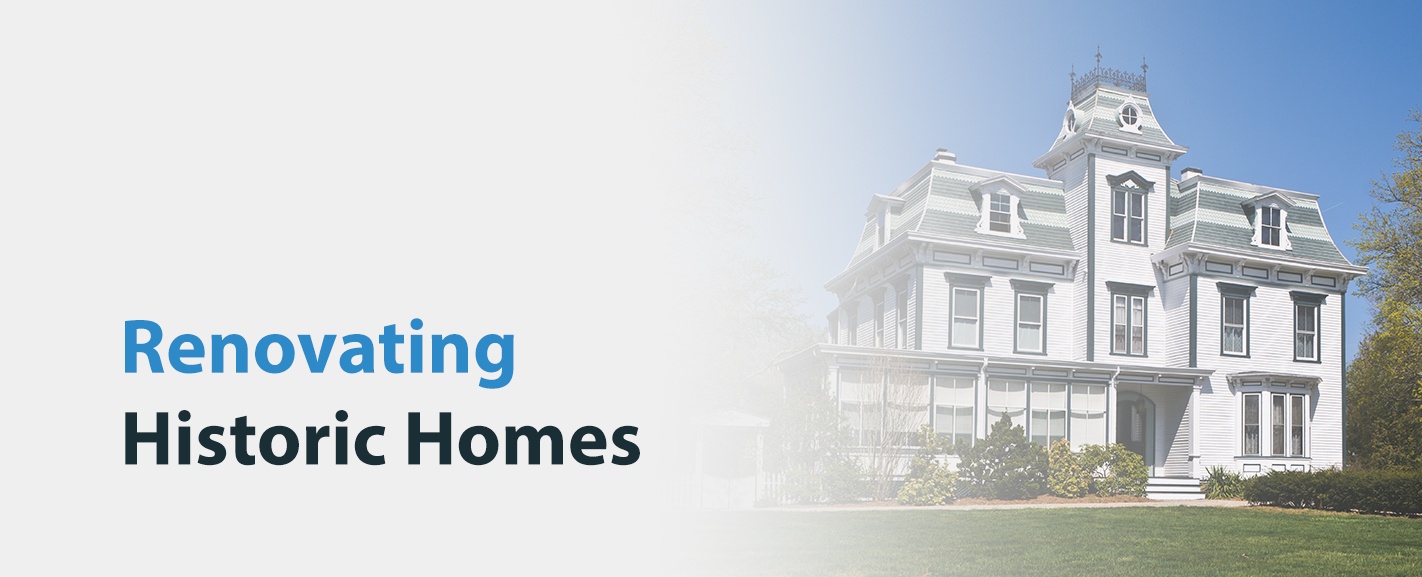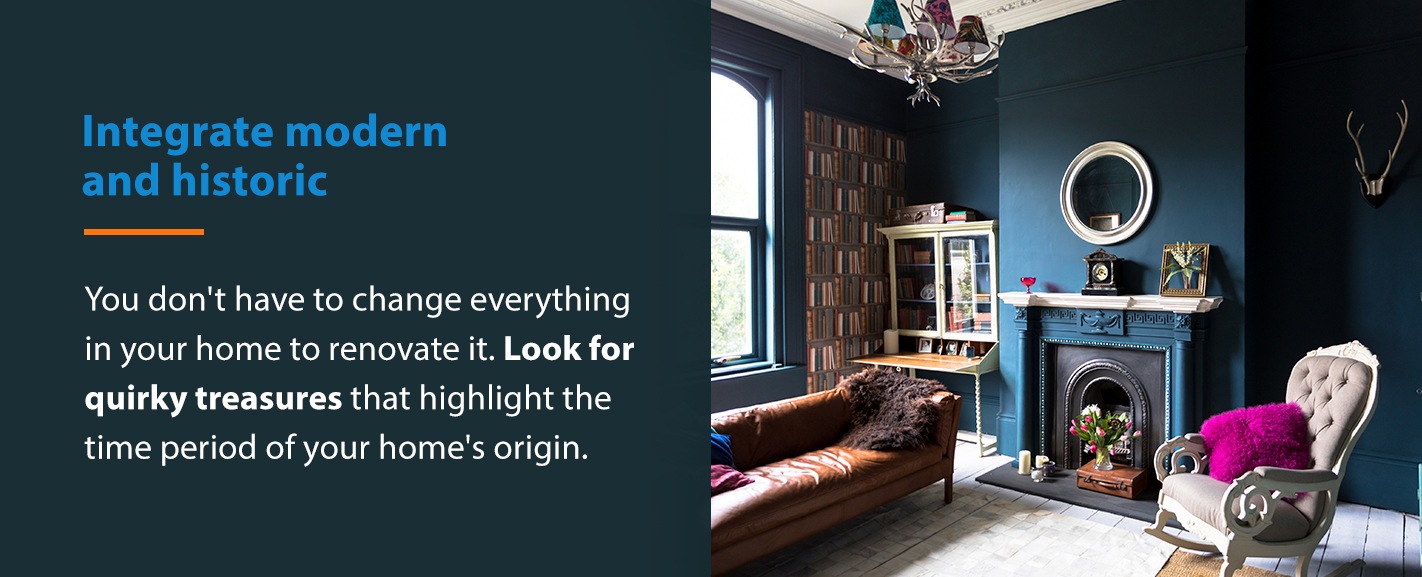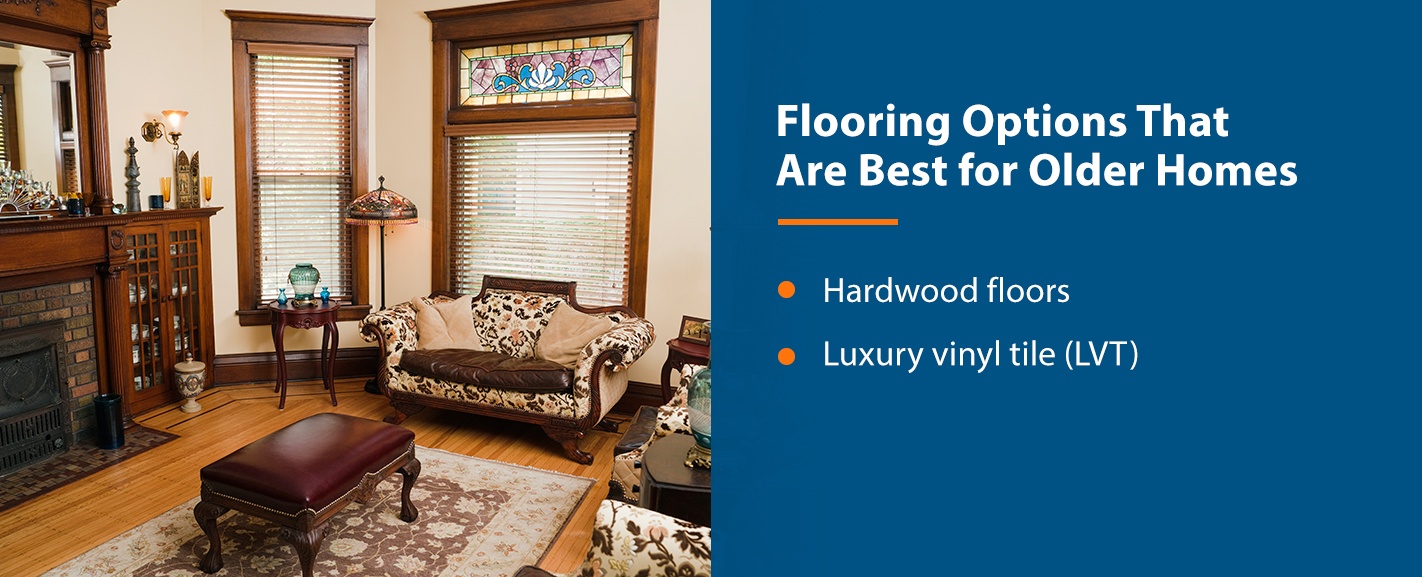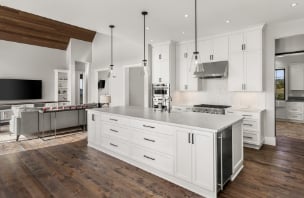

Historic homes are older than 50 years old and meet the architectural requirements of the National Register of Historic Places. An older building that’s been preserved can provide a lucrative return on investment (ROI) and often has an interesting story.
When updating an old home, you should focus on restoring its original beauty instead of completely remodeling its structure. Most people who invest in classic properties are interested in history and old architecture. You may even receive a tax incentive to preserve a historic property. Here are some tips for your historic home renovation.
Tips for a Historic Home Renovation


As you renovate your old building, find the balance between classic and modern. Here are some tips for updating an older home:
- Be patient: Your property has timeless traits that make it unique. Along with these quirks, older homes have accent details that you need to maintain often. Have patience as you inspect your home and take on this historic house renovation process.
- Do your research: Consult a group of professionals who specialize in preserving historic buildings. This group includes an architect, a historian or a representative of the historical society. A historic building needs to follow the architectural standards of the National Register of Historic Places.
- Inspect the house: Go through your home with an architect or a contractor. Make a note of the design elements that make your home historic. Pay attention to what you want to keep and what you want to change. A professional can point out what areas of the home are true to its time period. Your home has a story that you and your family can enjoy as you live in it.
- Watch out for structural damage: Older homes have had more exposure to moisture, UV rays, fire and insects than newer homes. As you inspect your home with an architect, watch out for moisture damage. You might be able to detect the dank, potent smell of mold in the various rooms. Pay close attention to cracks and bubbling in the ceiling, floors, windows and walls. Dealing with structural damage should take priority over minor decorative details.
- Integrate modern and historic: You don’t have to change everything in your home to renovate it. Look for quirky treasures that highlight the time period of your home’s origin.
- Open up the interior flow of the home: Older homes have floor plans that don’t always work for modern families. You are free to move walls and create a more open concept living plan. Think about the resale value of the home as you create a flow that works for you in your living space. Make your home a good accommodation for your family as well as future homeowners.
- Upgrade to high-quality materials: Many materials used in historic buildings — like wood, brick and stone — are energy-efficient and high-quality. You can make your home more energy-efficient by adding insulation to crawl spaces, weatherstripping windows and replacing lightbulbs. Using high-quality materials now will reduce your need for renovations later.
- Add a fresh coat of paint: Paint can add new life to your old property. Try to paint your home to reflect its original colors. A preservation architect or historian can tell you which colors were popular during that time.
Things to Upgrade When Updating an Old Home
A historic house renovation is fun, but it also can be a large task to undertake all at once. Break your project up by what you need to renovate and what you want to design. Here are distinctive features of your property that you should keep in mind:
- Brick and mortar siding: Brick and mortar has been a popular siding material for centuries. To care for the brick siding on your house, use a mild detergent and a soft brush to get rid of debris. Check the exterior of the building for water damage or deterioration. Replacement bricks should always be the same color, elevation and consistency as the other bricks on your home.
- Slate roofing: Before you replace any parts of your slate roofing, found out what kind of slate you have. Like bricks, you should only pair slate panels with matching material. Inspect your roof at least once a year for cracked or missing panels. Do your research before investing in a slater and replacement slating materials.
- Energy-efficient windows: Wood window frames last longer than modern vinyl windows and are naturally energy-efficient. Try to keep the wood around your window frames if you need to replace the glass panes. You could also add weatherstripping around your windows to increase their energy-efficiency. Energy-efficient appliances will help save you money and energy in your older house, especially in your historic home kitchen remodel.
- Plaster walls: Instead of replacing plaster with low-quality drywall, add a fresh coat of paint. Use a plaster mix to fill in any gaps in your walls. Test the mix in an inconspicuous area before applying to the rest of your wall.
- Metal hardware: Be gentle when cleaning stains or paint chips off your metal hardware. Using too much force could discolor doorknobs or locks. Clean with natural ingredients so you can maintain the original color. Find out what type of metal your hardware consists of so you can take care of it properly.
Flooring Options That Are Best for Older Homes


Some of the flooring options that were popular in the mid-1900s are still popular today. To update your deteriorated floors, these flooring materials would complement your property’s decor:
- Hardwood floors: When you think of a historic house, hardwood floors come to mind. Hardwood floors will give your home the perfect combination of modern and traditional aesthetics. You may be able to refinish the existing hardwood floors in your home instead of replacing them. Natural wood is long-lasting and durable when maintained properly. While laminate wood is easier to clean and less expensive, natural wood has a higher resale value.
- Luxury vinyl tile (LVT): Tile floors became popular in the early 1900s. LVT flooring is best for a mid-century modern or a Colonial Revival home. Vinyl is cheaper than other tile materials, and it’s easy to maintain. You have more color options with vinyl tile than with hardwood flooring.
Schedule an Appointment With 50Floor to Update the Floors in Your Historic Home
Complete your historic home remodel with a new floor. Our team at 50Floor specializes in installing floors and can perform a full floor replacement. Schedule an appointment by filling out a contact form online or calling 1-800-50-FLOOR.



